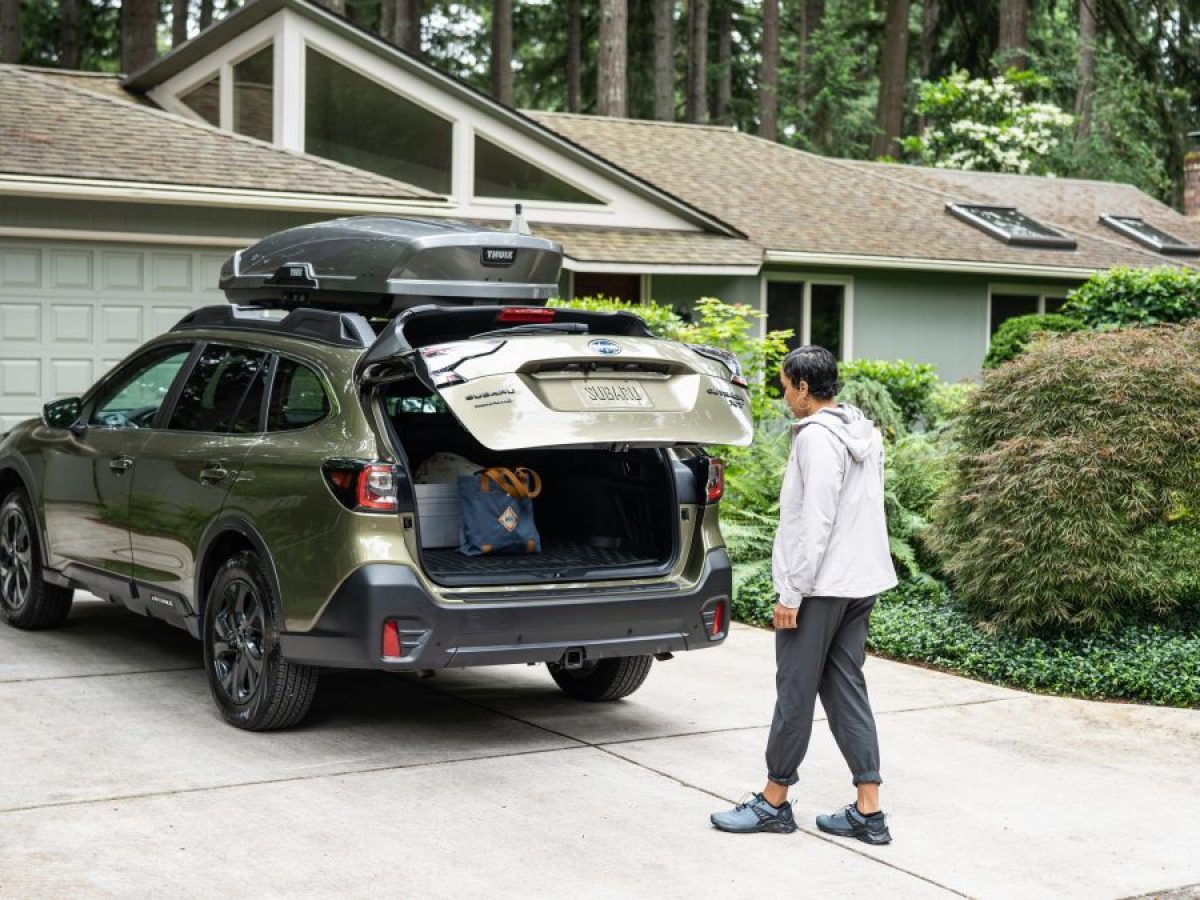There’s nothing quite like hitting the road with the windows cracked, singing along to your favorite playlist, with your sights set on an outdoor adventure. But for all the planning that goes into a road trip or a weekend backpacking trip—choosing a route, picking out snacks, curating the right tunes for the mood—it’s easy to overlook the most important tool in your kit: your vehicle. That’s why we partnered with Subaru to bring you some tips for getting your ride ready. So next time you yearn to explore, you can rest assured that your vehicle can handle whatever lies ahead.
Please remember to recreate responsibly during your adventures.
Check your tires

Tire Tread
Good tread makes it easier for your tires to grip the ground, be it pavement or dirt. To make sure your tread is intact, use this simple test: Insert a penny into the groove of your tire’s tread with the head of Abraham Lincoln pointing down. If, once you insert the coin, you can still see all of Lincoln’s head, that means your tread is too worn, and it’s time for new tires.
To help ensure the tread wears evenly, rotate your tires according to the maintenance schedule in your vehicle’s Owner’s Manual.
Tire Pressure
Maintaining proper tire pressure enhances your vehicle’s traction and performance, which improves your ability to control the vehicle and helps prevent unnecessary damage to the differential (a part that helps your vehicle make turns). Use a tire gauge to check tire pressure at least once a month.
Tire Seasonality
Choosing the right tire depends on the climate and season of your adventure. For instance, summer tires are good year-round in warmer climates. This high-traction option provides extreme grip. In cold climates, switch to winter tires, which are specifically designed to perform when temps drop below 40 degrees Fahrenheit. What about all-season tires? Although these are meant to handle a little bit of everything, they don’t offer the same level of grip as a summer tire, and they aren’t designed to be driven on roads covered in heavy snow or slick ice.
Full-size Spare vs Donut
Deciding whether to bring a full-size spare or a donut can largely come down to the nature of your trip. For instance, will you be driving for long stretches without cell phone service and easy access to a mechanic (or a town in general)? Will you also be driving in difficult terrain? If so, consider bringing a full-size spare, which is more durable and can be driven on for longer distances than a donut. Donuts, on average, are good for about 50 miles. But remember to change either tire as soon as you can. Although a full-size spare may be the same size as your regular tires, it’ll likely be a different type and isn’t meant to be a permanent fix.
Know your vehicle’s height and ground clearance
Vehicle Height
It’s important to know your vehicle height, taking into account any rooftop tents, cargo boxes or bike racks. This can help you determine whether you have enough overhead clearance when driving under bridges or in parking structures. Always consult your vehicle manual to determine the weight capacity of your vehicle’s roof and roof rails, both while parked and when the vehicle is moving. These weights can differ.
Ground Clearance
Ground clearance indicates the height of the lowermost part of the vehicle with respect to the ground. Higher ground clearance helps you clear obstacles on the road. On rough and bumpy roads, higher ground clearance is always better.
Test the battery

When a vehicle sits, its battery will slowly lose charge over time. It’s best to drive the car to charge the battery, but you can let the vehicle idle for 30 minutes once a week as an alternative. The acceptable length of time to let the engine idle may be bound by local laws and regulations, so make sure to double-check. And before you hit the road, take your vehicle in for a service and ask for a battery health test.
Create a safety kit

Before you hit the road, make sure you create a safety kit in case of an emergency. Some common camping items can also work for your kit. Here are some of our favorites:
- Petzl Actik Core Headlamp, $69.95
- REI Co-op Outdoor Blanket, $49.95
- Leatherman Signal Topo Multi-tool, $119.95
- Garmin inReach Mini 2-Way Satellite Communicator, $350
- GOOD TO-GO 5-Day Emergency Food Kit. $99.95
- Klean Kanteen Wide Mouth Bottle, $19.95
- Adventure Medical Kits Mountain Series Explorer Medical Kit, $59
- REI Co-op Diamond Medium Tech Tote, $24.95
Read more tips for car maintenance and camping with your Subaru on Subaru Drive:

